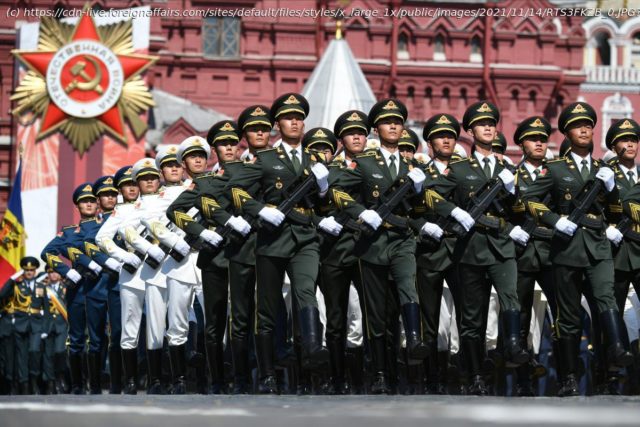Is Beijing building a rival alliance system?
The United States’ network of alliances has long been a central pillar of its foreign policy—and, as competition with China has intensified in recent years, held up as a major U.S. advantage. The administration of President Joe Biden has put a particular emphasis on allies in its Asia strategy. In its first year, the administration has both strengthened long-standing alliances such as those with Japan and South Korea and put considerable energy into bolstering multilateral partnerships such as the Quadrilateral Security Dialogue (with Australia, India, and Japan) and the newly formed AUKUS pact (with Australia and the United Kingdom). China, by contrast, has shied away from formal alliances, based on its supposedly distinct view of international relations and a pragmatic desire to avoid the risks of entanglement. But there are signs that Beijing’s resistance is starting to erode. In more recent years, it has upgraded its strategic partnerships and expanded military exchanges and joint exercises with countries including Russia, Pakistan, and Iran. These partnerships are still a far cry from U.S. alliances (which involve mutual defense clauses, extensive troop-basing agreements, and joint military capabilities). But they could in time form the basis of China’s own alliance network if Chinese leaders come to believe that one is necessary for both its deterrent effect and its operational value to prevail in a long-term competition with the United States and its allies. Such a development would mark a true turning point in this era of U.S.-Chinese competition and pave the way to an alarming new world with lower thresholds for regional and great power conflict. Today, China has only one formal ally—North Korea, with whom it shares a mutual defense treaty. But it has dozens of official partnerships with states around the world. At the top of the pyramid are Russia and Pakistan (whose extra-special ties with Beijing are denoted by long and exclusive monikers, “China-Russia Comprehensive Strategic Partnership of Coordination for a New Era” and “China-Pakistan All Weather Strategic Cooperative Partnership”). Then come several Southeast Asian states—Myanmar, Cambodia, Vietnam, Thailand, and Laos—as well as states farther afield, such as Egypt, Brazil, and New Zealand. Beijing has also invested great energy into building Chinese-led multilateral mechanisms, such as the Shanghai Cooperation Organization (SCO), the Forum on China-Africa Cooperation, and the China-Arab States Cooperation Forum. China has avoided building a traditional network of allies thus far for reasons ranging from long-standing ideological inclinations to hardheaded strategic calculations. Since the early days of the People’s Republic, Beijing has sought to portray itself as a leader of the developing world and a proponent of Non-Aligned Movement principles of noninterference and anti-imperialism. In more recent years, Chinese leaders have begun to insist that they practice a “ new type of international relations, ” eschewing traditional power politics in favor of “win-win cooperation.” Such language is meant to bolster the narrative that China’s rise should not be feared but be welcomed as a boon for global development and prosperity—and to distinguish Beijing from Washington, which Chinese leaders frequently criticize for maintaining an outdated “Cold War mentality.” China has dozens of partnerships with states around the world. In addition to such public diplomacy efforts, Beijing’s alliance-shy posture reflects a strategic decision to build relationships centered around economic ties in its quest for power and global influence. This is not to say that China uses only economic statecraft to advance its objectives. In fact, China has rapidly expanded its military capabilities over the last two decades and used its newfound might to intimidate Taiwan, jostle with India along a disputed border, and press its sovereignty claims in the East China and South China Seas.






